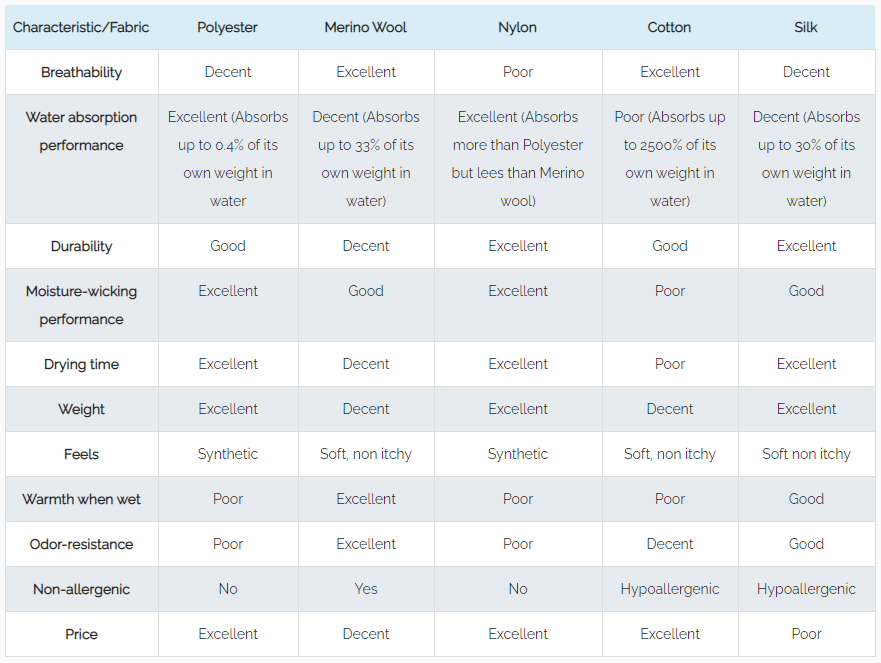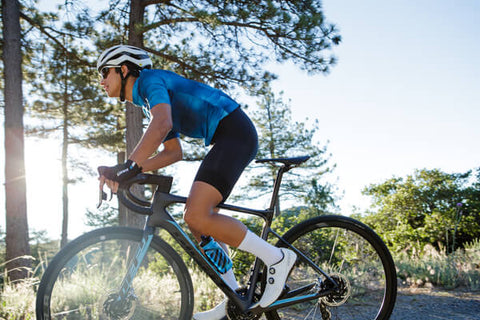Do I need a cycling jersey? How do I choose a cycling jersey How tight should a cycling jersey be?
Many questions come to mind when trying to purchase a new cycling jersey, be it your first and a new addition to your cycling wardrobe. With hundreds of different choices in the cycling jersey category, it can be daunting to find what type of jersey is the best fit for your specific riding needs. Fabrics, fit, features, and the overall intended purpose behind the design make a huge impact on whether or not the jersey will not only feel right but perform well. We're here to break down the best cycling jerseys for you and help make your next jersey purchase the best one yet!
Types of Bike Jersey Designs
What are the differences between types of jerseys?
Recreational / Comfort
A cycling jersey can still look practical and stylish without sacrificing performance. This cut is for those who want a more casual appearance but can benefit from cycling-specific features. Many recreational or comfort designed jerseys feature rear pockets for storing personal belongings, nutrition, or layers. They can also feature zippers for regulating body temperature mid-ride and grip on the sleeves and waist to keep the jersey in place while active.
The mountain bike jersey and tech tee give riders more range of motion and provide a more relaxed fit for a cycling jersey. Tech tees are similar to t-shirts however they are made of performance fabric that is better suited for wicking sweat, regulating body temp, and staying comfortable during activity. Mountain bike jerseys take that same design and add mountain biking specific features to improve the ride quality. These include storage pockets, ID pockets, and even goggle cleaning cloths integrated into pockets. This style jersey is popular with off-road riders.
The athletic road jersey is probably the most common cycling jersey you'll see. This style bike jersey holds the mid-ground between pro-level road bike jerseys and recreational/comfort-focused jerseys. These jerseys often feature form-fitting cut, storage pockets and generally come in at an affordable price point especially compared to any pro-level garments. Sleeves often feature grips to keep the sleeve in place during motion and the material is stretchy. Any rider can benefit from the comfort, efficiency, and performance offered from a quality road bike jersey.
The top of the line when it comes to cycling jerseys, the Pro or Race designed jerseys are the most aerodynamic and high-performance jerseys on the market. With the added features and high-quality materials, these jerseys tend to run a very high price tag as well and are typically the choice of extremely serious cyclists and professional athletes. Pro and Race bike jerseys offer the stretchiest, and most form-fitting material on the market offering riders maximum comfort and aerodynamics. These jerseys bring the rider maximum comfort during activity while providing the least amount of wind resistance possible.
Storage & Organization
Jerseys that feature storage pockets on the rear are typically designed with three horizontal pockets laid out across the lower lumbar and often features a zippered pocket for valuables. The photo below shows cyclists layering up pre-ride. Notice the storage pockets on the rear of the jersey.
Types of Fabric
What type of fabric should my bike jersey be made out of?
If you haven't heard of the word "Lycra" yet, you most likely will during your journey as a cyclist. Lycra is a brand name for spandex like fabric, also known as elastane. Most cycling garments feature this type of fabric due to its high breath-ability, stretch-ability, and moisture-wicking properties. You can still find a ton of jerseys made out of polyester and nylon, as well as other fabrics including water-resistant, wind-blocking, and UV resistant fabrics.
Wool
Wool, despite its association with ancient history and being hot and itchy, is a great athletic fabric and provides many benefits for the human body in motion. A quality wool, such as Merino, will feel great while wicking moisture. Wool is also great for sweating with its natural antimicrobial and odor-controlling properties.
Synthetic / Recycled Materials
With a global move towards renewable resources and recycling, many cycling companies have integrated the use of recycled materials into their product designs. Recycled polyester is used to make jerseys and other garments, and sourced from plastic materials including recycled bottles and even fishing nets!
Silk
If you're looking for a new hot weather jersey try a bike jersey made from silk. Claimed to be ultra-lightweight, antimicrobial, and odor resistant.

Chart provided by our friends over at (https://besthiking.net/comparison-of-base-layer-materials/)
Extra Features
What else do I need to know about buying the best bike jersey?
Temperature Rating
When suiting up to go for a bike ride it's important to check the weather and dress accordingly. This goes beyond just choosing between short sleeves or long sleeves. Layering can improve the quality of your ride immensely by keeping you comfortable and protected during the route. Many jerseys are listed with a temperature rating or a suggested season, such as "warm weather". It's best to build your cycling apparel collection with variety, allowing you to layer when necessary and be prepared for anything on your ride.
When shopping in-store you have a better gauge on the material used, the thickness of the jersey, and can even try it on to see how it feels prior to purchase. When shopping online this is not the case and that's when it's really important to look into the fabric, design, and intended use of your next potential jersey purchase. The temperature or season rating for a jersey can give you a good idea of how thick and breathable the jersey may be prior to purchasing.
Ultraviolet Protection Factor (UPF Rating)
Bike jerseys will sometimes have UPF ratings, which gauges how well the garment blocks the ultraviolet rays from the sun. Sunburn through your jersey is a reality; depending on the fabric and fit this can be more of a problem for some than others. Lycra and wool are naturally good at blocking UV rays however when the garments stretch and the sun is heavy they are less effective. You can check if a specific jersey you are interested in has a UPF rating. If you are looking specifically for a hot weather jersey this is a good idea to ensure the best riding experiences down the road.
Layer Up, Spend Less
What is the best way to layer clothing when cycling?
There's no perfect cycling jersey for every occasion and oftentimes layering is the most effective way to be ready for anything while riding your bike. Often times a route will involve steep, sustained climbing which is a situation where the cyclist will want maximum breath-ability followed by long descents in which the wind chill could easily cause the cyclists to need layers. Perhaps your route goes through the forest and has a long section of shade, followed by an exposed climb through the local canyons. These scenarios call for layering, and a solid layering system can easily replace the need for having different jerseys for specific climates. When layering focus on garments that are easily portable while riding, generally you want them to fit into your rear jersey pockets for convenience when not worn. We recommend arm and leg warmers, vests, jackets, windbreakers, and neck gaiters. These options all held regulate body temperature no matter what the route throws your way as well as stash small for stowing when not needed. A nice performance base layer is a great idea as well, especially to keep your core warmed up during those frigid months.










